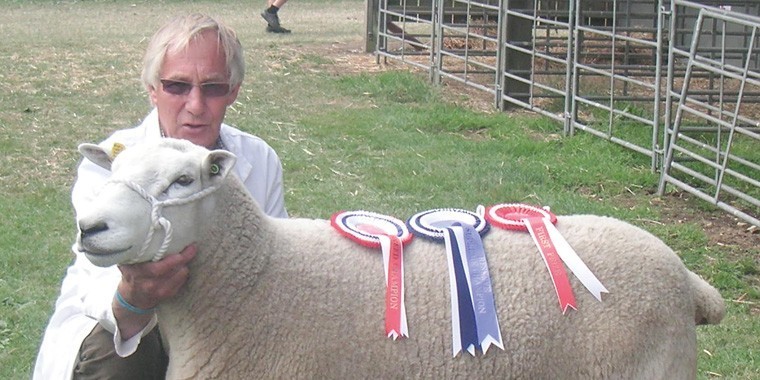Having endured the A303 on our way back from the Exeter Lleyn sheep sale, we simply unloaded our new stud ram yesterday evening into his quarantine area, gave him a dose of wormer and made sure he had a clean bed, plenty of hay and water and left him to settle into his new home.
Without wishing to be anthropomorphic, it must be a bit of a surprise coming from the peace and quite of a farm on the Lleyn Peninsula to rural Kent, particularly having made that journey via Exeter market. I certainly found the transition from Snowdonia to Kent, 36 years ago, quite challenging and a significant culture shock.
Anyway to come back to the point in hand, this morning he was quite happy and settled after his travels, particularly when a few sheep nuts were on offer (the way to a sheep’s heart is through it’s stomach, or should we say rumen) and it was nice to stand back and have a look at him in a more relaxed setting.
He is a very handsome fellow and quite self assured, considering that he had just arrived at his new home. But with a name like “Taco Formidable” he should be. He certainly looks as if he should tick most of the boxes that we had on our shopping list when we went to the sale: a good, well bred sheep with good wool, good back end, good temperament and small ears. Of course, anyone familiar with animal breeding will know that you can’t guarantee anything in breeding and that there is no such thing as the perfect sheep.
Those that think that sheep breeding is easy – which at a fundamental level it is – argue that you simply put a ram in with a few ewes and let them get on with it. But breeding with a purpose is not quite so easy or straightforward. Successful breeding for a specific outcome – and that may be quality slaughter lambs or quality pedigree, breeding stock – requires endless patience and a reasonable grasp of genetics.
I have known individuals move into a breed, spend a fortune on purchasing prize winning sheep thinking that they are immediately going be able to breed prize winners and sell progeny for lots of money, only to become disillusioned after a couple of years and loose interest. Sheep genetics are complicated: the sheep has more chromosomes than we do (54 compared to 46), each chromosome carrying millions of pieces of genetic information that control the traits that we are looking for. Some traits have single gene control and others are controlled by dozens or hundreds of different genes and gene combinations.
Sheep breeding never is an exact science. But at least we should, as breeders, be trying to make some sort of educated guess as to what the likely outcomes of our breeding decisions are. We do have a range tools to help us to make the right decision. Estimated breeding values produced by various recording schemes help, and an understanding of sheep genomics can make the job easier as can an understanding of the heritability of traits. The latter is an indicator of the rate of genetic progress that we are likely to make for particular traits – e.g. prolificacy and many more – but do we use them? Most of us don’t, or at least not as much as we should.
A lot of sheep keepers make purchasing decisions and invest a lot of money in breeding stock based simply on what they look like, even ram purchases. These will often be made without even checking teeth and testicles, let alone ask anything about its breeding and or look at performance data and breeding values. Ewe purchases are just as bad: when buying pedigree (or purebred) sheep at least you know with a reasonable degree of reliability their genetic make up and how they should perform.
Buying first crosses (halfbreds, mules etc) you know that 50% of their genetic make up is derived from each parent and you know reasonably well how they should perform as a group. But you have no guarantee which parent contributed the gene/s controlling particular traits or groups of traits, e.g. prolificacy. You do however have the benefits of hybrid vigour.
When buying three way crosses, you know the second crossing ram will contribute 50% of the genetic make up, but have no idea what the remainder is. Most assume that 25% of the remaining genetics will come from each of the grandparents. But this is rarely the case: it simply ignores biology. Twice during meiosis (cell division responsible for the formation of sex cells, both male and female) there is significant swap over of genetic material (this is how we get variability, essential for making progress).
As a result any three way cross will have 50% of its genetics from its dad, but any combination between 0% and 50% of the genes from either grandparent. Take any group of a hundred second cross ewes and we potentially have 100 genetically different – some significantly different – sheep, but then we try to manage them all the same.




